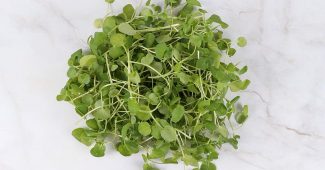Adequate vegetable intake is always essential to stay healthy. For an increased number of diabetic patients worldwide, conventional drugs may not be effective since they do not actually treat the root cause of diabetes, only reducing blood sugar levels.
To address insulin resistance, you must follow a diet low in calories and carbs but rich in essential vitamins, minerals, antioxidants, anti-inflammatories, and various micronutrients, slowly aiding the body to course-correct and improve insulin insensitivity. Below are the top 10 vegetables you can incorporate into your diet to treat diabetes.
10Cauliflower
Cauliflower’s entire nutritional profile is also beneficial in boosting immunity and avoiding complications like heart disease, kidney damage, and nerve damage. Being an excellent source of dietary fiber that slows digestion and carbohydrate absorption, incorporating cauliflower into a diet is beneficial for diabetes management.
9Cabbage
The dietary fiber and antioxidants found in cabbage help protect against cell damage and heart disease. Even though low in carbohydrates, cabbages contain essential micro and macronutrients like vitamin A, riboflavin, and iron. Their anti-glycemic agents help decrease blood sugar levels, making them ideal for treating diabetes. It also maintains kidney function, keeping blood sugar levels under normal limits.
Top 10 Vegetables with the Lowest Carb Counts
8Radish
They are also rich in antioxidants, such as coenzyme Q10, which can protect diabetic patients from complications and help regulate blood glucose levels. Incorporating radishes into your diet can also increase the production of adiponectin, a hormone that protects cells from insulin resistance.
7Bitter Melon
The proteins also prevent the body from changing the nutrients and storing them into glucose, then releasing them into the blood. Bitter melon also helps the body cells use glucose and move it to the liver, muscles, and fat. It has many nutritional benefits, and you can purchase fresh, dried, canned, or pickled melons as a supplement from any grocery store to control blood sugar levels.
6Okra
Okra, also known as ladyfingers, is a nutritious food for managing diabetes. With only 30 calories per 100g and no cholesterol or saturated fats, okra is high in dietary fiber, which helps control blood sugar levels in patients with type 1, 2, and gestational diabetes. It is non-toxic, nutrient-rich, and promotes digestion by controlling hunger cravings.
Consuming okra helps balance stress levels, significantly aiding blood sugar management. Okra is an excellent source of essential nutrients like fiber, vitamin B6, and folate, which help slow down the progress of diabetic neuropathy and reduce the risk of homocysteine, a factor that causes this disease. Moreover, the soluble fiber in okra stabilizes blood sugar levels.
5Cucumber
Cucumbers can effectively reduce blood sugar levels and lower the risk of hypoglycemia during blood sugar drops. For diabetic patients, adding cucumbers to their diet can help control blood sugar levels more effectively. Being a non-starchy vegetable, they satisfy an individual’s appetite without causing unnecessary spikes in blood sugar levels.
4Lettuce
A cup of lettuce provides only 5 to 10 calories of energy. Lettuce is nutrient-rich and contains essential vitamins like A, K, and other minerals, making it one of the best vegetables for diabetic and hypoglycemic control. Dietary fiber in lettuce manages diabetic blood sugar levels and helps slow down the digestion rate.
3Spinach
Spinach’s high fiber content prevents immediate blood sugar spikes. The American Diabetes Association recommends using spinach as a superfood to control type-1 and type-2 diabetes because it is non-starchy and has a low glycemic index. Its low-calorie count can help maintain a healthy weight, which is essential for diabetes management.
2Broccoli
Its vitamin C content also helps improve insulin sensitivity and reduce the risk of developing type 2 diabetes. The powerful antioxidants protect against some of the damage caused by diabetes. Its nutrient-rich profile provides anti-inflammatory and anti-cancer effects, thereby improving general well-being.
Related Articles
1Carrot
Its dietary fiber improves blood glucose levels, insulin resistance, and sensitivity, helping combat diabetes. The 2018 consensus report from the ADA indicates that carrots are a popular dietary choice among the health and wellness community due to their effectiveness in combating diabetes. Overall, carrots are effective in managing blood sugar levels and preventing complications related to diabetes.




